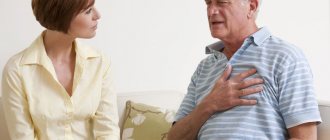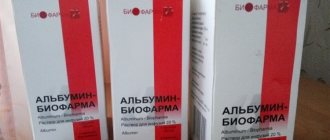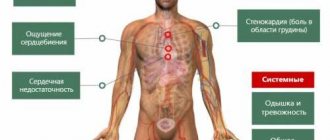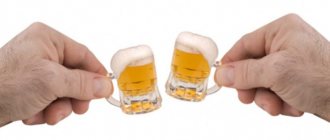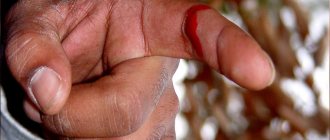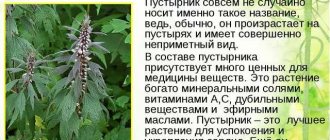Attack of VSD or vegetative crisis
Attacks of vegetative-vascular dystonia occur suddenly and are accompanied by unpleasant symptoms that are provoked by disorders in the autonomic nervous system.
With frequent attacks of VSD, a person’s level of performance decreases, attention and memory deteriorate. With intense manifestations, a deterioration in mental health is observed - he becomes depressed.
VSD is not a disease, but a set of symptoms that may indicate different diseases. Diagnosis depends on the type of accompanying symptoms. In the International Classification, a vegetative crisis is classified as a panic attack.
The first manifestations of the crisis are observed at about 20 years of age. But it happens that this happens at a younger age. Women are almost 3 times more likely to suffer from this symptom complex.
The manifestations of this disorder are not always pronounced. In most cases, the manifestations are blurred or insignificant. The trigger for the syndrome to enter the active phase is severe stress, hormonal imbalance, and intense physical activity.
The most striking are the first manifestations of a crisis, and therefore are remembered for a lifetime.
Helpful information
An attack of VSD manifests itself through difficulty breathing, rapid heartbeat, and causeless anxiety.
These and other signs lead to increased fear of death. This fear is most often caused by the fact that a person does not understand what is happening to him and cannot influence it either. Another concern is that the crisis can last from several minutes to several hours.
Main symptoms of crises
With different types of VSD, an attack of dystonia has different symptoms
Specific symptoms of a crisis depend on its type. General symptoms can be described as follows:
- sudden change in blood pressure;
- confusion or headache;
- anxiety or sudden onset of weakness and drowsiness;
- changes in heart rate;
- discomfort in the stomach;
- difficulty breathing or shortness of breath.
Vegetative-vascular crises are always accompanied by a number of mental symptoms. When blood pressure rises, severe anxiety, a panic attack, and a sudden fear of death occur. A person experiences the same emotions during a cardiac crisis, when suddenly the heart begins to contract very quickly.
Crises accompanied by a decrease in blood pressure cause apathy, indifference, confusion and disorientation. A person suddenly feels very tired, depressive symptoms appear, and possible tearfulness or an attack of self-pity. As a rule, hypotensive crises occur with hypochondria, in which the patient immediately “identifies” several signs of various fatal diseases, and hypertensive crises occur with attacks of panic and uncontrollable anxiety.
How to recognize an impending crisis?
You can recognize an impending attack by a sudden change in mood. The first harbinger of this disorder will be either sudden causeless anxiety or sudden fatigue, even if 5 minutes ago the person felt good and was full of strength.
The first sign of a sympatho-adrenal attack can also be sudden thirst, irritability and an outburst of aggression.
Autonomic-vegetative-vestibular crises occur spontaneously and most often immediately after some sudden movement. Other forms of crises occur due to stress, physical activity, or changes in weather conditions.
Causes of vegetative crisis
There are many reasons for the occurrence of VSD attacks. They are divided into primary and secondary. The primary factors that provoke the development of a vegetative crisis include genetic determinism. It leads to deviations in the structure and functioning of systems and organs.
Secondary causes include:
- prolonged and frequent stress;
- excessive physical activity;
- mental stress;
- hormonal imbalance;
- mental instability;
- problems with the heart and vascular system;
- chronic diseases of internal organs;
- cervical osteochondrosis;
- traumatic brain injuries;
- pathologies of the endocrine system;
- long-term medication use;
- presence of allergies;
- physically inactive lifestyle.
People with weakened nervous systems suffer from attacks more often. These individuals are generally quite impressionable and suspicious, mentally unstable, do not tolerate change well, are anxious, with constant mood swings.
Vegetative crises also provoke acute diseases, the use of psychotropic substances, and alcohol.
Varieties
In total, there are three types of VSD attacks. Depending on the type, the number of relapses varies, as well as the severity of the condition. They also depend on the disorder of one or another part of the nervous system - sympathetic, parasympathetic. Each of them corresponds to a specific type. In total there are:
- Panic attack (sympathoadrenaline crisis), which is provoked by disorders of the sympathetic department. This variety is characterized by the release of adrenaline into the blood, which provokes a narrowing of blood vessels, overexcitation, and increased heart contractions. Pallor of the skin and headaches also appear. Nervous overexcitation leads to increased anxiety and increased fear.
- Vagoinsular syndrome, which is characterized by disorders of the parasympathetic department. With this type, there is a sharp release of insulin into the blood. A person exhibits symptoms of a hypoglycemic state. Its main symptoms include a decrease in blood pressure, constriction of the pupils, sweating, an attack of suffocation and vomiting.
- Mixed appearance, in which there are signs of sympathoadrenaline crisis and vagoinsular syndrome.
Also, attacks of vegetative-vascular dystonia are divided depending on the duration of the attack. They come in light, medium and heavy. Lungs appear no longer than 15 minutes and are often accompanied by disorders of one system (for example, in the form of rapid heartbeat or asthma attacks).
The average ones last up to an hour, and after them a post-crisis state is observed, which lasts up to several days. Severe autonomic attacks are characterized by disorders of many systems simultaneously (for example, tachycardia, fear, headache, increased salivation, nausea). The duration reaches several hours, after which the unpleasant sensations may continue for the next two days.
How to strengthen cerebral vessels during VSD: doctor’s advice – Suppressed
In the complex treatment of vegetative-vascular dystonia (VSD), moderate physical activity, proper nutrition and the absence of overwork and stress play an important role.
Even if the disease itself does not yet cause severe discomfort, improving the blood supply to the brain will have a positive impact on the well-being of any person.
Many medications for VSD have a complex effect on the body: they strengthen the walls of blood vessels, support the myelin sheath of the nerves, and normalize blood pressure.
Strong blood vessels guarantee good health
With VSD, the blood vessels spasm, which causes dizziness, numbness of the limbs, fainting, heart rhythm disturbances and other unpleasant sensations.
Since health can sharply deteriorate at any moment and anywhere, a person begins to get nervous and expect an attack, thereby provoking vascular spasm.
VSD is often accompanied by panic attacks, fear of leaving the house, traveling in public transport, or driving a car. Such self-restraints can cause depression.
The stronger the dysfunction of the blood supply to the brain, the more dangerous this condition is for health. It can lead to migraines, insomnia, memory and attention disorders, and strokes.
Drug treatment
Since VSD is a complex of symptoms associated with problems in the functioning of different body systems, there are no universal medications for treatment. Most often, patients have to listen to their body and analyze their well-being for years in order to recognize the approaching vegetative crisis in time.
Sudden surges in blood pressure and rapid heartbeat are obvious signs, and treatment in this case is aimed at quickly normalizing blood pressure and relieving the physical manifestations of anxiety:
- Valocordin or Corvalol (as sedatives and antispasmodics);
- Propranolol (Anaprilin) and other beta-blockers.
It is important to remember that cardiac autonomic dysfunction and cardiovascular diseases may have the same symptoms, but the treatment is significantly different.
If heart pain, tachycardia, and shortness of breath occur regularly, it is worth undergoing a full examination and excluding other pathologies. Too frequent use of Corvalol has a negative effect on the gastrointestinal tract and causes dependence on bromine.
Banned in other countries, phenobarbital, which is part of Corvalol and Valocordin, can cause neurological disorders when used regularly in large doses.
Beta blockers sharply lower blood pressure, which can lead to fainting, heart failure, and even cardiac arrest.
For VSD, the following is often prescribed:
- nootropics that improve metabolic processes in the brain (Piracetam, Phenibut);
- vitamins to strengthen the nervous system (Neuromultivit, vitamins A, B, E);
- to reduce anxiety - antidepressants (Sertraline, Zoloft), sedatives (Novopassit, Persen).
Lemon with garlic
20 cloves of garlic and 5 lemons, peeled, chop and mix with sugar, which you will need 1 kg. Pour 2 liters of cold boiled water, put in a dark and dry place for 3 days.
This remedy should be taken 15 minutes before meals three times a day, 1 tsp. You can make an infusion without sugar, but then add not 20 cloves of garlic, but only 1 head.
Instead of sugar, liquid honey is sometimes added, which also has a hypotensive effect and makes the drink tastier.
Mixture for strengthening blood vessels
A mixture of dried fruits, garlic and honey is beneficial for blood vessels. Take 500 g of prunes, dried apricots and lemons, pitted, and grind using a meat grinder or blender. You can add lemon zest too.
Separately chop 3 heads of garlic and 20 walnuts. Pour liquid honey over all products and mix thoroughly. If you have problems with the gastrointestinal tract, garlic may not be used. Instead, it is better to add 1 tsp. olive oil.
Take 1 tablespoon of the mixture in the morning and evening after meals.
The importance of a daily routine
Manifestations of VSD often indicate stress, the fact that the nervous system cannot cope with stress. If possible, it is worth reducing overtime, not skipping lunch, and taking a short break once an hour to shake yourself up. It won't hurt to warm up your back, neck and shoulders. For those who work at a computer, it is important not to neglect eye exercises.
The human body is sensitive to the sun, so working at night quietly has a strong negative effect on the nervous system, which is contraindicated for patients with VSD. It is harmful to stay up late at the computer.
Water vascular training
Invigorating water treatments improve blood circulation. A contrast shower or contrast baths for hands and feet energize a person, so it is recommended to do them in the morning.
The Russian bath also has a beneficial effect on blood vessels, but patients with VSD should be careful and not steam for a long time, and people with heart disease should refrain from visiting a bath or sauna.
How to strengthen cerebral vessels during VSD, medications for the heart
Vegetative-vascular dystonia or VSD is characterized by dysfunction of the autonomic system. The disease is accompanied by a number of symptoms, the cause of which is poor circulation and vascular weakness. There are two methods to strengthen cerebral vessels during VSD: using medications or folk recipes.
Why is it important to strengthen blood vessels?
VSD is accompanied by:
- fluctuations in blood pressure;
- tachycardia;
- respiratory dysfunction;
- chills;
- pale skin;
- confusion;
- dizziness.
These symptoms are caused by autonomic dysfunction, a malfunction of the autonomic peripheral nervous system.
This part of the nervous system is responsible for ensuring the vital functions of the body - heartbeat, breathing, blood circulation. The tools for such control are nerve fibers and blood vessels.
With the loss of vascular tone, the autonomic system cannot fully perform its function, and the symptoms of dysfunction worsen.
Strengthening the blood vessels of the brain will not be able to relieve VSD overnight, but it will significantly improve the patient’s well-being and reduce the frequency of vegetative crises.
How it manifests itself
VSD attacks can manifest themselves in different ways. The symptoms of this disorder are many and can have different combinations depending on the form. The most common signs of a vegetative crisis include:
- darkening of the eyes;
- speech disorder;
- lack of concentration;
- feeling of derealization, depersonalization;
- tachycardia;
- headache;
- dizziness;
- lethargy;
- increased level of sweating;
- suffocation;
- feeling of unreasonable fear;
- increased anxiety;
- sleep problems;
- increased salivation;
- involuntary urination;
- irritable bowel syndrome.
- numbness of arms and legs.
Signs appear in different combinations and may be more intense or muted. Their severity and duration manifest themselves differently, depending on the individual characteristics of the organism. It has been noticed that the intensity of manifestations is brighter in the hot season.
Clinical picture
Headache
During the period of exacerbation, sympathoadrenal crisis is characterized by the onset of symptoms in the evening or at night. The development of an attack in the first half of the day, as a rule, is not typical for a sympathoadrenal crisis. Patients complain of headaches and a feeling of pulsation in the head. From the cardiovascular system, complaints may include interruptions in the functioning of the heart, palpitations, pain in the heart area, reminiscent of an injection.
During a sympathoadrenal crisis, symptoms such as numbness of the limbs, a feeling of suffocation, and chill-like tremor may also be observed. Body temperature may be normal or elevated, tachycardia is observed, and blood pressure numbers may increase. During vagoinsular crisis, patients complain of a feeling of freezing in the heart with interruptions in its work, a feeling of lack of air or suffocation. There may be dizziness, general weakness, a feeling of falling into the “unknown,” and a feeling of hunger.
Dizziness and general weakness
The skin turns red and becomes moist. From the digestive system there may be complaints of abdominal pain, flatulence, and the urge to defecate. In such patients, a decrease in heart rate may be detected, heart sounds may be arrhythmic, and blood pressure numbers are reduced relative to normal numbers. With a mixed version, patients may present complaints characteristic of both types described above. In addition to the most common types of vegetative-vascular paroxysms, there are other options.
An attack of VSD may be accompanied by fainting with convulsive twitching of the limbs. A vestibular-like variant may also occur, when the main complaint is severe dizziness and tinnitus. Another option may be an attack, where the leading symptom is headache. This is a so-called migraine-like attack. There is another type of exacerbation of VSD, when suddenly there is a feeling of nausea, vomiting, severe weakness, and a decrease in blood pressure.
How to cope with an attack?
Depending on what form of crisis is being dealt with, its elimination will occur in different ways. An attack of VSD can occur both during the day and at night. Patients perceive nighttime manifestations worse, as they seem more pronounced.
If we are talking about a mild form, you can cope with it at home. To do this, you should initially accept the idea that the symptoms being shown are not fatal and can be influenced.
To eliminate unpleasant manifestations, just take a walk in the fresh air, drink herbal tea, and lie down.
If this is a crisis of moderate or severe form. You can't do this without taking medications. But for this you need to seek help from specialists. After additional diagnostics, a diagnosis is established and treatment is prescribed. The most commonly prescribed drugs are tranquilizers and antidepressants.
People suffering from a constant vegetative crisis anticipate the onset of the next attack. If possible, it is worth distracting yourself with something, sometimes it really helps. But if an attack cannot be avoided, in order to alleviate the condition, you should follow some recommendations:
- unfasten the top buttons of clothes to allow fresh air to enter, if possible, open a window;
- sit on a chair, or better yet, lie down if this is an acute form of crisis, raise your legs high for blood flow to the head;
- drink a sedative;
- calm down, wait until the attack passes.
What should you not do during an attack?
If a person finds such manifestations in himself, in order to alleviate his condition, he needs to give up some actions that will only aggravate the condition.
Speaking about the disorder as a whole, it is worth considering that those suffering from VSD need to exclude:
- alcohol abuse;
- smoking;
- use of any psychoactive substances;
- drinking coffee and caffeinated drinks;
- heavy physical exercise;
- reduce stressful situations
If we are talking about another attack, during it it is not recommended to take pills that were not prescribed by a doctor or continue physical activity. Otherwise, an attack of VSD does not require additional action.
If a person does not know anything about the disorder, it is more difficult for him to cope with the manifestations. The fear intensifies and this only intensifies the symptoms. To avoid this, it is worth learning more about the crisis, as well as how to deal with it.
Treatment
Therapy for somatomorphic autonomic dysfunction is necessary. This allows us to reduce negative manifestations to a minimum, thereby improving a person’s quality of life.
For VSD, the following treatment methods are practiced:
- medicinal;
- traditional medicine;
- psychotherapy.
Vegetative-vascular dystonia is treatable, but it will take a lot of time to achieve complete recovery. Especially when it comes to advanced complex forms.
Helpful information
Even those who have a hereditary predisposition can get rid of negative symptoms. In this case, doctors achieve long-term remission.
The most common therapy is medication. Depending on the degree of damage, sedatives, antidepressants and tranquilizers are used. The latter are prescribed only by a doctor. If there are problems with high blood pressure, antihypertensive drugs are prescribed.
The most common drug for panic attacks is Glycine. If anxiety increases, Afobazole is prescribed. Dizziness is eliminated by Betaserc, and blood pressure is reduced by Bisoprolol. Improved metabolism occurs with the use of Vazorbalom. Vestinorm is used for sleep problems. An equally common drug is Validol, which eliminates excessive excitability and reduces the manifestation of tachycardia. Grandaxin is used to eliminate obsessive states in humans during and after an attack. Magnesia is used for attacks of somatomorphic autonomic dysfunction as an anticonvulsant drug.
Traditional medicine involves the use of herbs to prepare soothing herbal teas. Psychotherapy is also very important, but many ignore this stage, considering it useless. But in fact, it is almost the most important. The reason is that the root cause of VSD is often neurosis - a psychogenic disorder that is treated through psychotherapy. Depending on the severity of the crisis. It is recommended to contact a psychologist, psychotherapist, or psychiatrist.
What to do with vegetative-vascular dystonia?
Treatment for VSD syndrome should be prescribed by a doctor.
You should not try to cope with its manifestation on your own.
Treatment of neurocirculatory dystonia includes taking herbal medications.
For example, tinctures of motherwort, ginseng, or valerian.
If the patient has severe neurotic disorders, then he should use mild sedatives and medications that strengthen the nervous system.
To improve blood flow, as well as its circulation in the vessels of the brain, drugs such as Glycine, Piracetam, Ginkgo Bloba, Pantogam, Actovegin can be prescribed.
It is recommended to use them for at least three months.
After completing the entire course, the patient should have improved memory and a reduction in the frequency of migraines and headaches . Symptoms such as forgetfulness, fatigue, and absent-mindedness should disappear. In addition, your general condition should improve.
Prevention
It is difficult to prevent the manifestation of vegetative-vascular dystonia if we are talking about genetic determination. More often, an attack of VSD occurs against the background of a severe stressful situation or due to significant stress. It turns out that in some cases this can be avoided. Regardless of whether a person has had attacks or not, in order to prevent or minimize them, it is necessary:
- reduce stressful situations;
- reduce or completely eliminate the consumption of coffee and caffeinated drinks;
- avoid intense physical activity;
- maintain a daily routine;
- to refuse from bad habits;
- spend more time outdoors;
- take a contrast shower;
- If you have psychological problems, seek help from a psychologist or psychotherapist.
Somatomorphic autonomic dysfunction brings a lot of inconvenience to those it affects. But you can correct the situation if you seek help from specialists. This type of disorder is treatable. To obtain a better and faster effect, an integrated approach is used.

